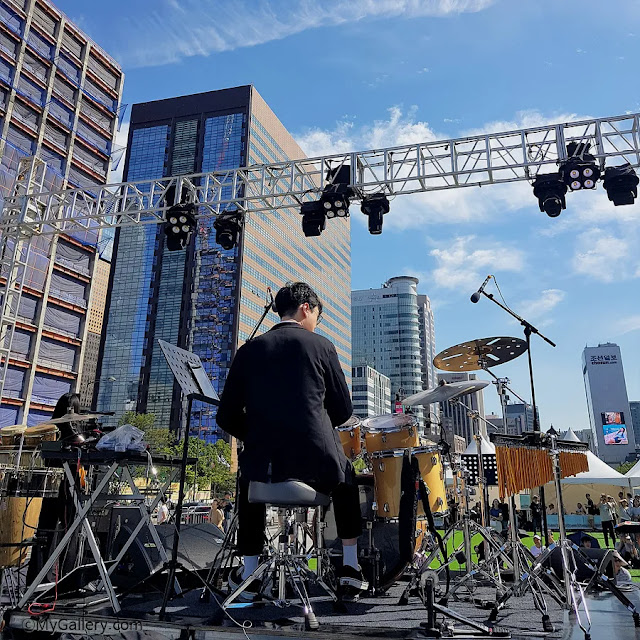Gwanghwamun Square is the center of Korea's history and culture. Gwanghwamun Square is also called Gwanghwamun Plaza.
Gwanghwamun Square, Travelguide to Seoul
Even after Gwanghwamun was destroyed by fire during the Japanese Invasion of Korea in 1592, the road in front of Gwanghwamun was Yukjo Street, which was the central government office district where the government officials gathered. But now, it is like a representative park in the center of the city where citizens gather and have the most fun in Seoul.
About Gwanghwamun Square
Gwanghwamun was restored when King Gojong rebuilt Gyeongbokgung Palace, but after the forced annexation of Korea and Japan in 1910, the Joseon Governor-General was established in Gyeongbokgung Palace and was forcibly relocated to the east of Gyeongbokgung Palace. During the Third Republic, Gwanghwamun was rebuilt with concrete, and controversy over its location and building materials continued, but it was restored to its original place through historical evidence in 2008. The loss and restoration of Gwanghwamun was repeated several times, but in the meantime, Gwanghwamun Front Road was still the central space of Korea, the most important place for people to gather, meet, and share news and opinions, and has emerged as a symbol of democracy and harmony through various modern and contemporary history.
Introduction for Gwanghwamun Square
Along with the restoration of Gwanghwamun, the road in front of Gwanghwamun in 2009 was the first to have the shape of a square in accordance with the meaning and function of the place. Gwanghwamun Square, which reopened in August 2022, inherits the historical meaning and depth of the road in front of Gwanghwamun, such as solving the people's long-cherished desire to restore Woldae, and is expected to be loved by citizens as a representative place of life for Seoul citizens.
What is the meaning of Gwanghwamun Square?
Gwanghwamun Square is also a symbol of the Korean political movement and democracy. Many demonstrations and mass rallies have been held here, especially recently, where political issues have arisen.
The history of the Gwanghwamun square has continued from the People’s Assembly, the March 1st Independence Movement, and the civil revolution to the present day, with Gwanghwamun Square still remembering as a symbol of democracy and a space of harmony for Korean.
Who built Gwanghwamun?
Gwanghwamun was one of the four gates built on the palace walls. They were built in 1395, during the reign of King Taejo of the Joseon Dynasty, but the gates and walls went through many processes of destruction and reconstruction.
Admiral Yi Sunsin's Statue Standing in Gwanghwamun Square
You can see the statue of the general standing in the middle of Gwanghwamun Square. This statue was erected on 27 April 1968. He is Admiral Yi Sunshin. Admiral Yi Sunshin was the best naval admiral who saved Joseon during the Japanese Invasion of Korea in 1592. Without him, Joseon could have been destroyed by Japan. However, due to his excellent command and strategy, the Japanese army was forced to step down during the Japanese Invasion of Korea in 1592. Admiral Yi Sunshin is revered by Koreans as a hero of all time who saved the country.
How can I get to Gwanghwamun Square?
Take subway line 5 to Gwanghwamun Station (Exit 2), take subway line 1 to Jonggak Station (Exit 1), continue 450 meters in the square on the right, and take subway line 3 to Gyeongbokgung Station (Exit 6).


















Social Plugin